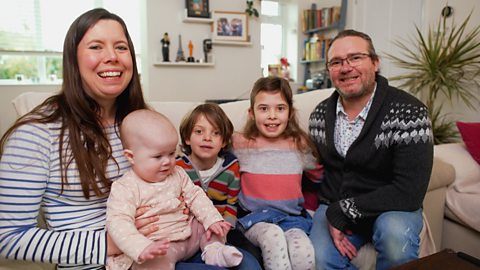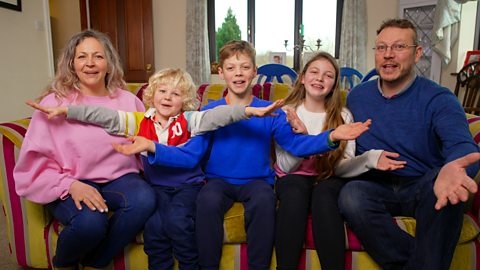Video summary
Meet 8-year-old Josh, twin brother Zac and older brother Nathan. The three brothers show us how they support and care for each other.
Teacher Notes
Three brothers - Josh, Nathan and Zac - show us how they support each other, why it's good to ask for help when you need it, and how as a family they are always there to support each other.
The Notes below are taken from the complete document.
Learning objective
To show the different ways that family members can offer support to one another and how to ask for help when it is needed.
Key questions
Before the video:
- Why might different people in a family need help?
- Is there anyone in a family who might need more help than other people / special help?
- How can people in a family help each other with their feelings?
During / after the video:
- What are the different ways that the brothers all help each other?
- What kinds of things do they need help with?
- Who might need some extra help?
- What ways do Josh’s family say or show extra ways of helping him if he needs it?
- What helps people in the family feel good / deal with feelings that aren’t so good?
After the video:
- How do people in your family help you?
- How do you help people in your family?
- Who can someone go to if they have not so good feelings / feel worried, sad or scared about something?
- How / Who can someone ask for help if they need it?
- Who could you go to if you have not so good feelings / feel worried or sad? (This could relate to / reinforce existing work on support networks).
- How can you help someone else if they need help, or if they were having not so good feelings?
Suggested activities
- Discuss how it feels to be worried or scared, identifying places in the body where these feelings can happen.
- Make a class list of things which might worry or scare someone; then alongside write the names of people who can help if someone is feeling that way.
- In the video Josh says that it’s better to tell someone about feelings instead of holding them in. Use a picture book - such as The Huge Bag of Worries - to help children understand how feelings affect our mental health if they’re kept inside. They could create a class or group bag of worries using objects such as stones, then draw out one at a time and discuss what someone could do about / how they could help with that worry to make the bag lighter.
- Ask children to explain how they could help someone they know who was feeling worried or scared, etc. What could they do or say? They could do this as a role play, draw pictures or write words in speech bubbles, etc.
- Ask children to draw a picture of themselves and write around the outside all the people who they could go to if they were feeling worried, scared or unsafe.
- Reinforce messages around safety networks through activities such as children drawing around their hands and naming one person on each finger who they can trust and talk to if they need to.
When families change and grow. video
8-year-old Alexa and younger brother Archie's family changed when their mum died. But things changed again and now they have a step-mum and a half-sister.

Caring family networks. video
When 7-year-old Ivy's parents broke up her Dad moved out and she remained with her mum and brother. Ivy says that now she has two families.

Helping out. video
5-year-old Buster and brother Dexter show us how they help out around the busy family farm and how their responsibilities will change as they get older.
